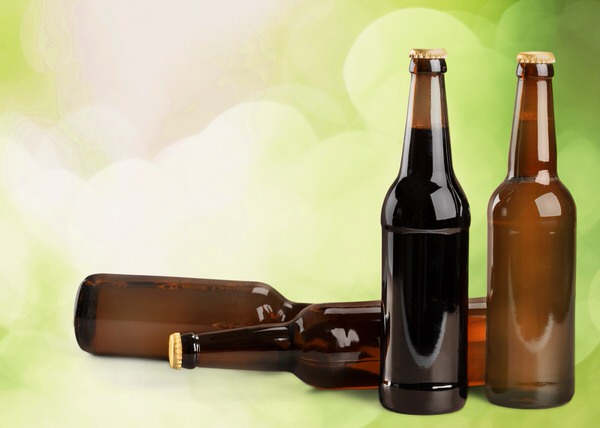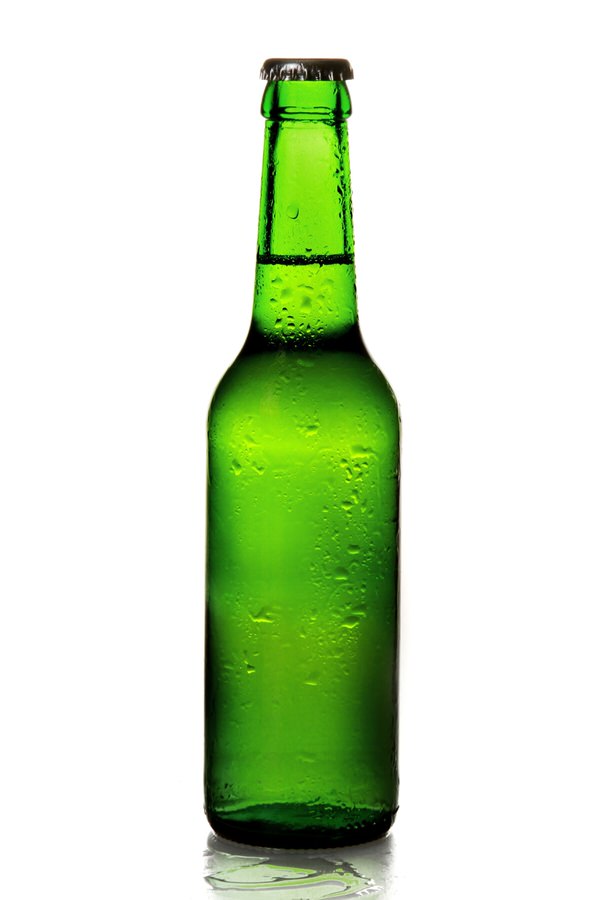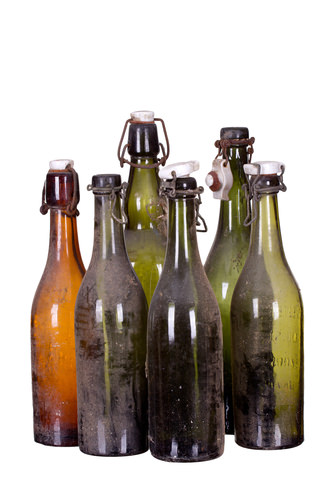Why Are Beer Bottles Brown? The Answer Might Surprise You
While people around the world likely recognize a beer bottle when they see one, many may not realize why beer bottles look the way they do. Beer bottles come in a variety of colors for a distinct reason, in order to keep their contents enjoyable over an extended period of time. Most of it comes down to practical science with a few marketing concepts thrown in for good measure.
A Quick History of Beer Bottles

Beer history goes back to times before Noah’s Ark. Glass bottles for the production of beer have been used as far back as the 16th century. Commercial bottling didn’t start until the latter part of the 17th century and many manufacturers faced the problem of glass beer bottles not being strong enough to withstand the pressure of the CO2 used to manufacture beer. It took about a hundred years before beer producers discovered longneck bottles were the way to avoid the problem.
Longneck beer bottles are still the most popular style used today, but over the years, innovative designs like forty-ounce bottles known as “forties” and short pony bottles are used in the market. Glass used today for bottling beer is stronger than in the past, so different shapes are able to be used effectively and safely. While beer has been produced since the late 17th century, the demand for beer and beer bottles only skyrocketed after World War I.
Understanding Beer Bottle Colors
Glass was initially used to hold beer because it was found to be the best material for keeping the liquid fresher for longer periods of time. But it took some time to come to the conclusion that clear glass was not the way to go when it came to beer. Clear glass became a problem. Clear bottles of beer left in the sun quickly turned sour. The smell and taste of the beer resembled the smell of a skunk.
After significant investigation as to why beer kept in glass bottles spoiled so quickly, scientific research produced evidence that ultra-violet rays from the sun were responsible for damaging the acids found in the hops. This reaction triggered a chemical process which produced a chemical nearly identical to that of the spray of a skunk. So the term ‘skunky beer’ was quite literal when it came to bad beer. The actual term used in the brewing industry when beer has gone bad is referred to as ‘lightstruck’. Any beer using hops are subject to skunking. However, new advancements in the beer industry have led to the development of light stable hops to prevent this chemical reaction when exposed to solar radiation.
Prior to the innovations of the modern beer bottling industry, manufacturers had to come up with a solution to prevent UV rays from ruining their batches. They discovered utilizing brown beer bottles would shield the beer from UV rays, not unlike sunglasses protecting our eyesight. Brown beer bottles are still used today by many of the most popular beer producers.
The Green Beer Bottle Story

Brown glass bottles are still the ideal material to use for bottling beer as it provides the ultimate protection against UV rays. However, there was a time during World War II when brown glass was in great demand. Many companies were not able to get brown glass to manufacturer beer bottles and had to create bottles made of green glass. The green color did not protect as well as the brown but did a better job than clear glass.
Beer producers started to use green glass to denote their higher quality beer. This made it easier for consumers to tell which beers were from higher class European breweries and as such, the green bottle become a symbol of status. Today’s beer manufacturers no longer need to use green glass out of necessity but some companies, like Heineken, are staying with the green bottles for branding and marketing purposes.
As for the clear glass bottles, thanks to modern technology today’s clear glass can be coated with a UV protectant to ensure beer stays just as fresh.
Making Your Own Beer at Home
These days, friends are getting together more often to brew their own specialty beers at home. Brewing parties are a great way to spend time with your friends and make the beverage you love to drink most.

There are many recipes available online depending on the craft brew you wish to create. For more industrious folks, making and bottling your own brew is a nice way to store up special gifts for friends and family. Once the beer is brewed to specification, it will need to be siphoned into bottles. Bottles need to be sanitized prior to use and placing them inside a large pan will keep the bottles upright. Any spills can also be cleaned up easily.
Once the beer has been poured, the cap of the beer bottle needs to be placed on top. A special clamping tool will secure the cap in place. Most beers need to set for a period of time before you drink them. Ideally, the bottles should be placed inside a dark pantry or cabinet to allow for carbonation. Most homemade brews can be stored for up to 12 months before they start to lose flavor.
Once the brews are ready to drink, put them in the refrigerator overnight so they’ll be nice and cold prior to serving.
Personalizing Your Beer Bottles
If you make large quantities of your homebrew to give out to friends and family, there’s no reason you can’t put your signature touch on them. Choose a beer bottle you like best. You can stay with the traditional brown bottle for authenticity or whichever bottle strikes your fancy.
Have custom labels created with the name of your beer, your name, the date it was made, and any other special touches you’d like to add. Personalizing your beer bottles will certainly make a statement at your next party or family gathering. If multiple friends enjoy brewing their own beers, host a beer tasting party.
Collectible Beer Bottles

While beer was primarily sold in kegs until the 1800’s, there are a number of beer bottles collectors are still finding today. Bottled beer really became an important product in the 1890’s due to the discovery of the fermentation process. The railroad system across the United States also made beer a popular product.
Early beer bottles always included a credit stamped on the bottle which indicated the name of the brewer and the date it was produced. The earliest bottles in America were not made of glass. Ceramic stoneware was the choice material until glass became more commonplace. The glass was available in the variety of colors including blue, green, clear, and brown still being used today.
As glass bottles were expensive in the early days of beer, companies stamped their names on each one so they could be returned. Usually bootleggers were the ones failing to return the bottles in order to use them for their own brews. Rarely did the word “beer” appear on the bottles. Only the name of the brewing company and the city were included as that was the information consumers needed. As brewing companies became larger, terms like brewing company then became commonplace on beer bottles. Later, mascots and logos were used on the labeling.

The Early 1800’s
Collectors of beer bottles follow the evolution of the bottle to better date their find. In the 1850’s, bottles were short Porter and Stout bottles. In the 1870’s, beer bottles featured a taller, slender shape and quart bottles were introduced into the market. Embossing the glass bottles also became a common practice up until 1918. Embossed ale bottles from the 1870’s are highly collectible but very rare. In the 1890’s, beer brewers worked to improve the efficiency of the bottle and a standardization across the industry took place. It was during this time the crown cap was invented.
After Prohibition
Prohibition lasted from 1919 to 1933. At that time, beer bottles were not being made. When production resumed, another drastic change affected the beer bottle’s image. Many breweries began using beer cans. Collectible bottles after prohibition are often those with unusual colors. The condition of the bottle and its label will also matter where value is concerned.
Beer bottles have a long history in America. While many people most appreciate the liquid contained inside the bottle, there is a beauty to the bottle itself. Vintage and antique beer bottles tell an interesting story of a very popular drink around the world.







































